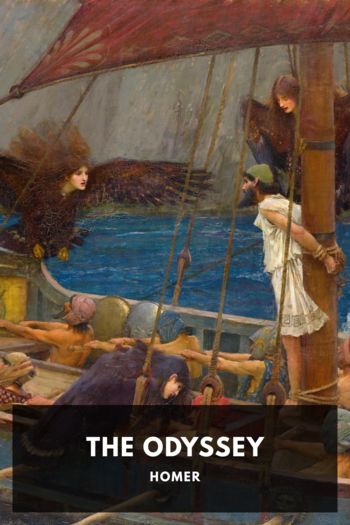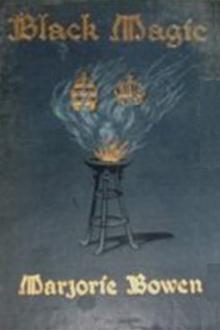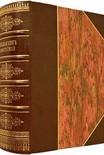The Wrecker, Clive Cussler [book club suggestions .TXT] 📗

- Author: Clive Cussler
Book online «The Wrecker, Clive Cussler [book club suggestions .TXT] 📗». Author Clive Cussler
“Mr. Van Dorn’s orders,” said Abbott. “He says if you won’t take the night off, you’re off the case and so am I. He’s not fooling, Isaac. He said he wants clear heads all around. He even bought us tickets to the Follies.”
“I thought it closed.”
“The show’s reopened for a special run while they’re getting it ready to take on tour. My friend the newspaper critic called it, quote, ‘The best melange of mirth, music, and pretty girls that has been seen here in many a year.’ Everyone in town is beating down doors to get tickets. We’ve got ‘em! Come. We’ll get dressed, and have a bite at my club first.”
“First,” Bell said grimly, “I want three fully loaded coal tenders parked, brake wheels locked, on the other side of that gate, in case some brain gets a bright idea to ram it with a locomotive.”
22
ARCHIE ABBOTT, WHOSE BLUE-BLOODED FAMILY HAD FORBADE him to become an actor, belonged to a club in Gramercy Park called The Players. The Players had been founded nineteen years earlier by the stage actor Edwin Booth, the finest Hamlet of the previous century and the brother of the man who had shot President Lincoln. Mark Twain and General William Tecumseh Sherman, whose famously destructive march through Georgia had hastened the end of the Civil War, had joined the effort. Booth had deeded over his own home, and celebrated architect Stanford White had transformed it into a clubhouse before he was shot to death in Madison Square Garden by steel heir Harry Thaw.
Bell and Abbott met for a quick supper downstairs in the Grill. It was their first meal since a breakfast gulped at dawn in a Jersey City saloon. They climbed a grand staircase for coffee before they headed uptown to Forty-fourth Street and Broadway to see the Follies of 1907.
Bell paused in the Reading Room to admire a full-length portrait of Edwin Booth. The artist’s unmistakable style, a powerful mix of clear-eyed realism and romantic impressionism raised a tide of emotion in his heart.
“That was painted by a brother Player,” Abbott remarked. “Rather good, isn’t it?”
“John Singer Sargent,” said Bell.
“Oh, of course you recognize his work,” said Abbott. “Sargent painted that portrait of your mother that hangs in your father’s drawing room in Boston.”
“Just before she died,” said Bell. “Though you would never know it looking at such a beautiful young woman.” He smiled at the memory. “Sometimes I’d sit on the stair and talk to it. She looked impatient and I could tell she was saying to Sargent, ‘Finish up, already, I’m getting bored holding this flower.”’
“Frankly,” Abbott joked, “I’d rather answer to a painting than my mother.”
“Let’s get going! I have to stop at the office and tell them where to find me.” Like all Van Dorn offices in large cities, their headquarters in Times Square was open twenty-four hours a day.
Dressed in white tie and tails, opera capes and top hats, they hurried to Park Avenue, which they found jammed with hansom cabs, automobile taxicabs, and town cars creeping uptown. “We’ll beat this mess on the subway.”
The underground station at Twenty-third was ablaze in electric light and gleaming white tile. Passengers crowding the train platform ran the gamut from men and women out for the night to tradesmen, laborers, and housemaids traveling home. A speeding express train flickered through the station, windows packed with humanity, and Abbott boasted, “Our subways will make it possible for millions of New Yorkers to go to work in skyscrapers.”
“Your subway,” Bell observed drily, “will make it possible for criminals to rob a bank downtown and celebrate uptown before the cops arrive on the scene.”
The subway whisked them in moments uptown to Forty-second and Broadway. They climbed the steps into a world where night had been banished. Times Square was lit bright as noon by “spectaculars,” electric billboards on which thousands of white lights advertised theaters, hotels, and lobster palaces. Motorcars, taxicabs, and buses roared in the streets. Crowds rushed eagerly on wide sidewalks.
Bell cut into the Knickerbocker Hotel, a first-class hostelry with a mural of Old King Cole painted by Maxfield Parrish decorating the lobby. The Van Dorn office was on the second floor, set back a discreet distance from the grand stairway. A competent-looking youth with slicked-back hair and a sliver of a bow tie greeted clients in a tastefully decorated front room. His tailored coat concealed a sidearm he knew how to use. A short-barreled scatter gun was close at hand in a bottom drawer of his desk. He controlled the lock to the back room by an electric switch beside his knee.
The back room looked like an advertising manager’s office, with typewriters, green-glass lamps, steel filing cabinets, a calendar on the wall, a telegraph key, and a row of candlestick telephones on the duty officer’s desk. Instead of women in white blouses typing at the desks, a half dozen detectives were filling out paperwork, discussing tactics, or lounging on a break from house-dick lobby duty in the Times Square hotels. It had separate entrances for visitors whose appearance might not pass muster in the Knickerbocker’s fine lobby or were more comfortable entering and leaving a detective agency by the alley.
Catcalls greeted Bell’s and Abbott’s costumes.
“Gangway! Opera swells comin’ through!”
“You bums never seen a gentleman before?” asked Abbott.
“Where you headed dressed like penguins?”
“The Jardin de Paris on the roof of the Hammerstein Theater,” said Abbott, tipping his silk hat and flourishing his cane. “To the Follies of 1907.”
“What? You have tickets to the Follies?” they blurted in amazement. “How did you get your mitts on them?”
“Courtesy of the boss,” said Abbott. “The producer, Mr. Ziegfeld, owes Mr. Van Dorn a favor. Something about a wife that wasn’t his. Come on,





Comments (0)